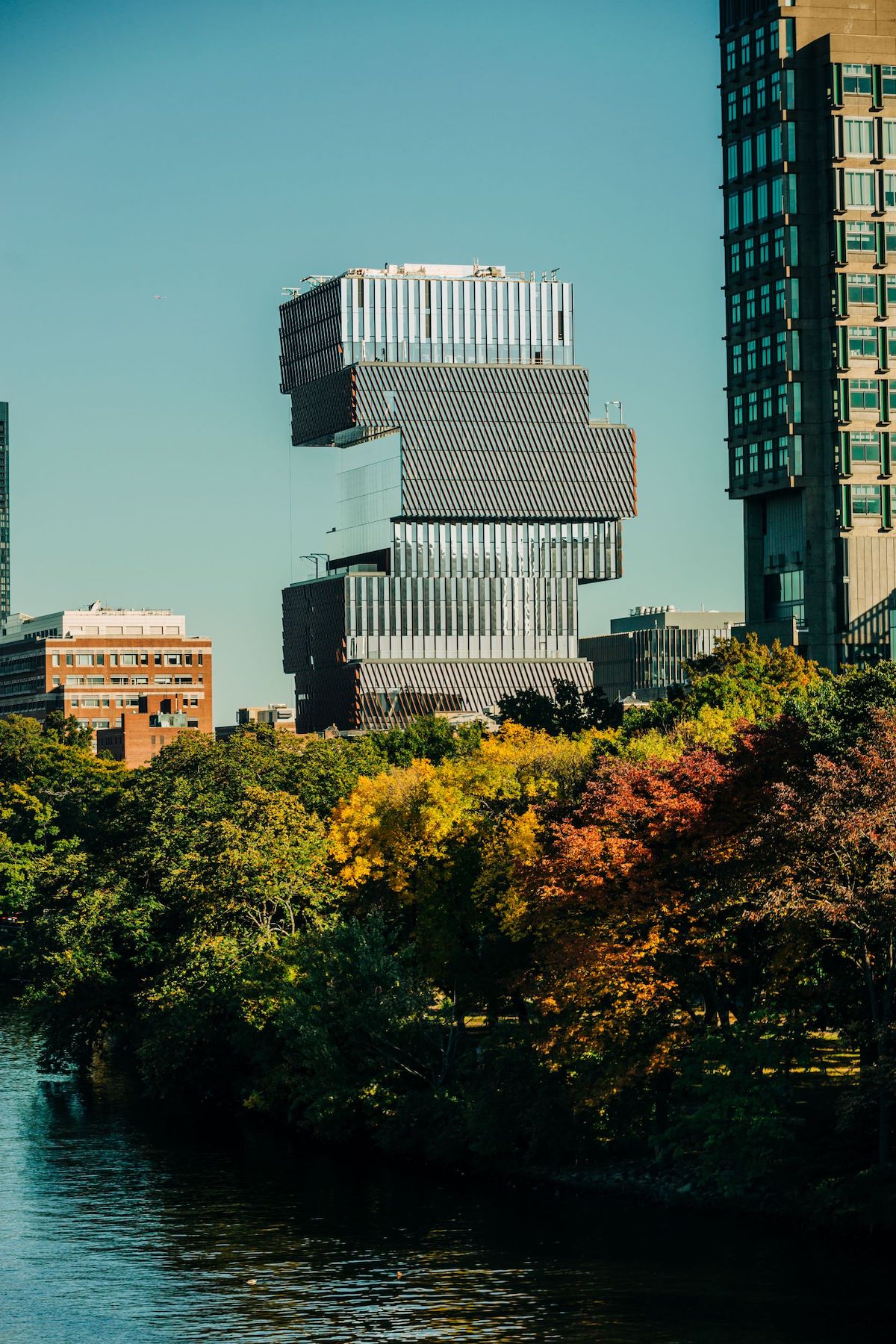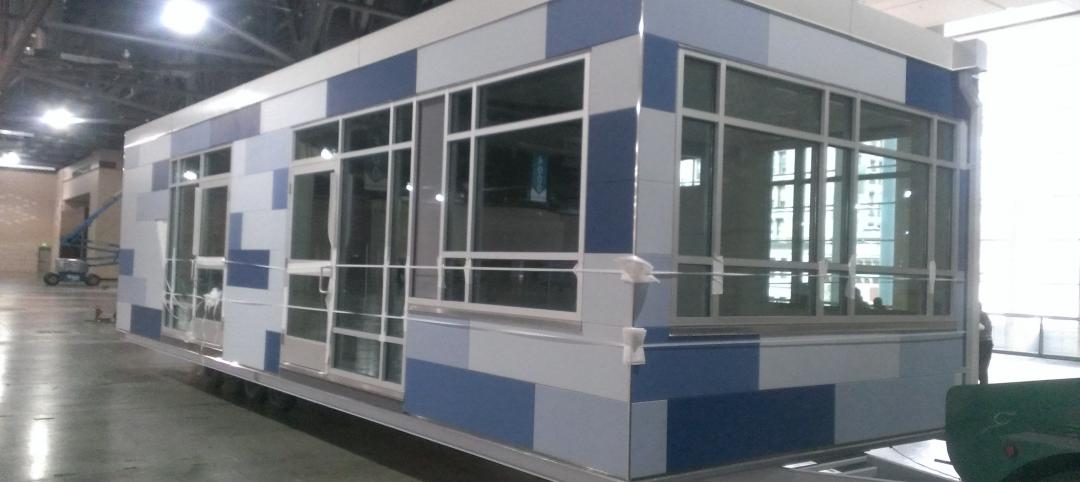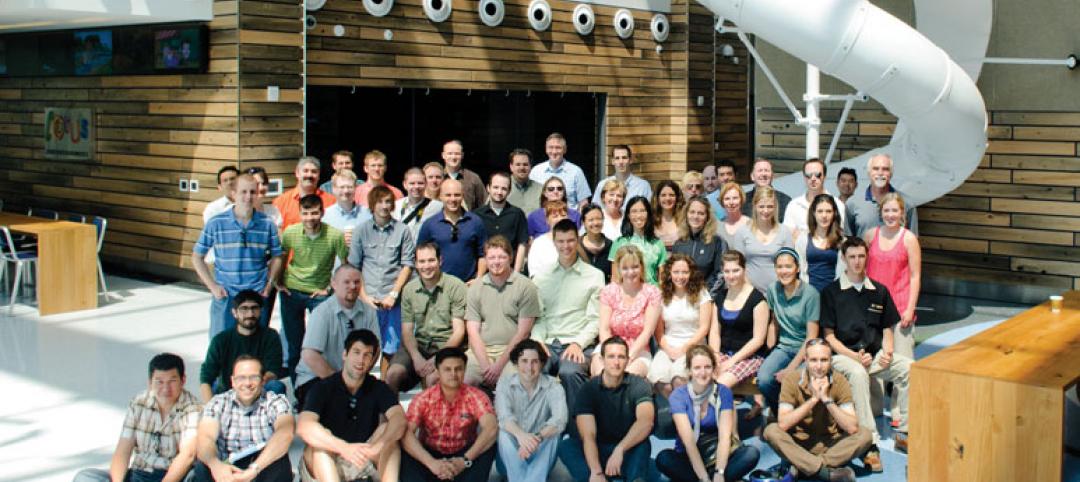The Boston University Center for Computing & Data Sciences has opened on the college's Charles River campus as one of the most sustainable and energy efficient buildings in Massachusetts.
The GC and construction management firm Suffolk, which is headquartered in Boston, delivered this 19-story 345,000-sf building, which is 100 percent fossil-fuel free as a result of the installation of a geothermal system with 31 bores, each about 1,500 ft deep into the earth, that harness thermal resources for heating and cooling the building.
The installation of this system puts BU at the vanguard of Carbon Free Boston, the city’s 2050 carbon neutrality goal. Other energy saving features in the building include triple-glazed windows, staircases that reduce elevator usage, and terraces and green roofs.
Designed by Toronto-based KPMB Architects, the Center will house the university’s newly created faculty of computer and data sciences, its Mathematics and Statistics department, its computer science programs, the BU Spark! Technology incubator, and the Rafik B. Hariri Institute for Computing and Computational Science & Engineering.
“We are in a data-driven revolution, and Boston University is committed to leading in this revolution,” said BU President Robert A. Brown.

The facility itself is designed with intellectual collaboration in mind, featuring an all-glass interior that creates transparency and invites light deep into the building. The unique design of the structure, which is composed of a series of floorplates shifted and cantilevered around the building’s central core, creates a vertically stacked and staggered layout of “neighborhoods” for each academic discipline.
Departments occupy 12 floors that sit atop a five-story podium. There are also two mechanical floors. Blocks of two-to-three floors are slightly off-center from the block below them, and give the building the appearance of being a giant stack of books. Its glass-and-steel exterior are designed to reflect natural light dramatically but also limit direct sunlight from entering the interior spaces. The building “calls attention to itself,” said Luigi LaRocca, KPMB’s founding principal and project manager, in an interview with BU Today.
The $305 million Center was built on a university-owned parcel that was formerly a parking lot and, before that, a Burger King.
Related Stories
| Nov 14, 2013
How increased domestic energy production affects the nation [Infographic]
In light of America's new energy resources and an increased emphasis on energy efficiency, Skanska examined the trends in U.S. energy production and consumption, as well as the benefits we may incur from increased domestic energy production.
| Nov 14, 2013
Behind the build: BD+C's 'Pedia-Pod' modular pediatric patient unit at Greenbuild 2013 [slideshow]
Next week at Greenbuild, BD+C will unveil its demonstration pediatric patient unit, called Pedia-Pod. Here's a behind-the-scenes look at the construction of this unique modular structure.
| Nov 13, 2013
Installed capacity of geothermal heat pumps to grow by 150% by 2020, says study
The worldwide installed capacity of GHP systems will reach 127.4 gigawatts-thermal over the next seven years, growth of nearly 150%, according to a recent report from Navigant Research.
| Nov 8, 2013
Can Big Data help building owners slash op-ex budgets?
Real estate services giant Jones Lang LaSalle set out to answer these questions when it partnered with Pacific Controls to develop IntelliCommand, a 24/7 real-time remote monitoring and control service for its commercial real estate owner clients.
| Nov 8, 2013
Net-zero bellwether demonstrates extreme green, multifamily style
The 10-unit zHome in Issaquah Highlands, Wash., is the nation’s first net-zero multifamily project, as certified this year by the International Living Future Institute.
| Nov 8, 2013
Exclusive survey: Architects balance ideals, skepticism regarding green strategies
Architects are seeking affirmation that the complex array of programs, systems, and tools at their disposal actually do result in more sustainable buildings, according to a recent survey of architects by Building Design+Construction.
| Sep 9, 2013
Top 25 continuing education courses on BDCuniversity
An overview of the 25 most popular continuing education courses on BDCuniversity.com.
| Sep 4, 2013
Smart building technology: Talking results at the BUILDINGChicago/ Greening the Heartland show
Recent advancements in technology are allowing owners to connect with facilities as never before, leveraging existing automation systems to achieve cost-effective energy improvements. This BUILDINGChicago presentation will feature Procter & Gamble’s smart building management program.
| Mar 21, 2013
Best Firms to Work For: Enermodal Engineering is green to the core
At Enermodal Engineering, there’s only one kind of building—a sustainable one.
| Feb 21, 2013
BD+C's 2011 White Paper: Zero and Net-Zero Energy Buildings + Homes
We submit our eighth White Paper on Sustainability in the hope that it will inspire architects, engineers, contractors, building owners, developers, building product manufacturers, environmentalists, policymakers, government officials, corporate executives, officeholders, and the public to foster the development of net-zero energy buildings and homes.

















